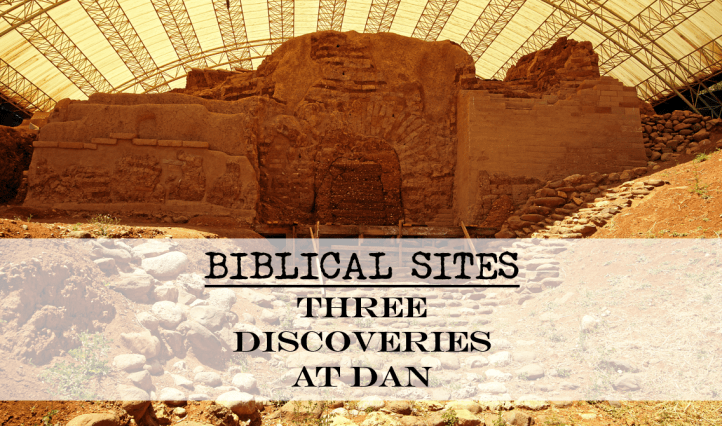
It was said of old that the borders of ancient Israel were “from Dan to Beersheba.” (Judges 20:1; 1 Sam. 3:20; 2 Sam. 17:11; 1 Kings 4:25; 1 Chron. 21:2; 2 Chron 30:5). The city of Dan, on the northernmost border of Israel, was originally named Leshfem before the Danites captured it, renaming it Dan, after their ancestor (Joshua 19:47). Mentioned 20 times in Scripture, Dan came to be associated with idolatry as one of the two places Jeroboam I set up a golden calf for the northern Kingdom of Israel to worship (1 Kings 12:28-29).
Tell el-Qadi was positively identified as the site of ancient Dan when a Hellenistic-era inscription in Greek and Aramaic was discovered which records a vow that a person named Zoilos made “to the god who is in Dan.”1 Excavations at Tell el-Qadi/Tell Dan began in 1966 under the direction of renowned Israeli archaeologist Avraham Biran, who dug there for 30 years. In 2005, archaeologists from the Nelson Glueck School of Biblical Archaeology of Hebrew Union College-Jewish Institute of Religion renewed excavations at Tell Dan. Over the years a number of spectacular discoveries have been made at Tell Dan which affirm historical details about the site found in the Bible.
City Gates
Two significant city gates have been discovered at Tell Dan: one from the Canaanite city and one from the Israelite city.
In the 18th century BC, the Canaanites at Lesham (Dan) built an imposing mudbrick gate. This massive entrance to the city featured a triple-arched entrance with two towers – one on each side. It has sometimes been dubbed, “Abraham’s Gate” because Abram once rescued his nephew lot from his kidnappers near Dan (Gen. 14:14). However, this mudbrick gate was only built ca. 1750, while Abraham lived from ca. 2166 to 1991 BC2. He may have seen an earlier version of this gate, but the actual structure that survives today was built over 200 years after he died. The 3700+ year-old mudbrick gate survives today at a height of 7 meters and it is the earliest intact archway in the world.3
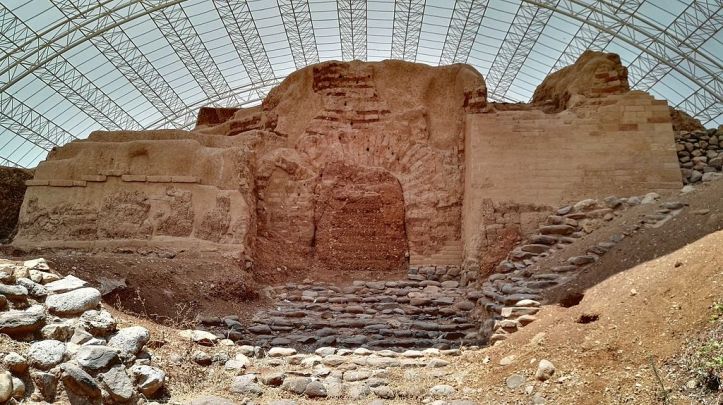
Equally as impressive is the gate complex from the Israelite city. The remains of the Iron Age gate, likely built in the time of King Ahab,4 have been partially restored. The gate’s chambers may have served as guard stations, storage rooms or a place for merchants to sell goods.5 Archaeologist, Avraham Biran, discovered a raised platform inside the main gate, with decorated socket stones that may have supported a canopy. Different suggestions have been proposed for its function: It may have been a place for the king or judge to sit to oversee the city business (2 Samuel 18:4) or it may have been a shrine where an idol was displayed (2 Kings 23:8).6
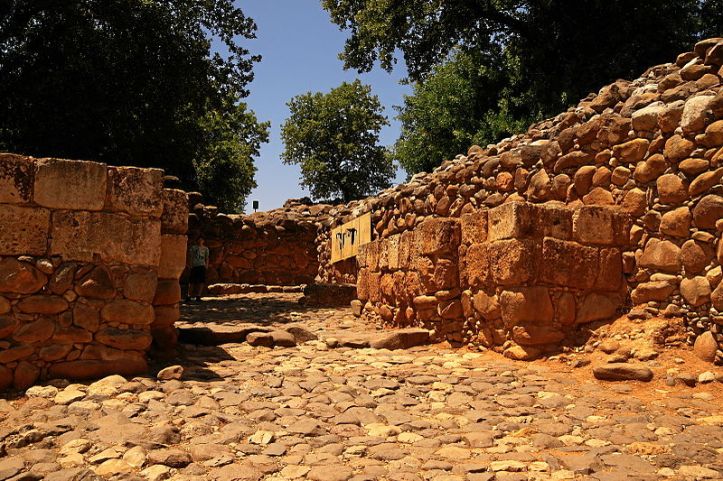
Altar/High Place
When the Hebrew Kingdom split in the 10th century BC, Jeroboam was made king of Israel and reigned in Shechem (1 Kings 12:25). One of his first acts was to establish a place of worship for the Northern Kingdom so that the people of Israel would not return to Jerusalem to offer sacrifices. He set up two golden bull calfs – one on the southern border in Bethel, and one on the northern border at Dan – and called them Elohim, declaring that these gods had brought the people out of Egypt. (1 Kings 12:26-29).
On the north side of Tell Dan, the remains of the High Place, the Israelite Temple, were found. Numerous cultic artifacts were unearthed, including iron shovels, an incense holder and a small horned altar. In addition, a large raised platform was excavated, which was in use during the time of King Jeroboam, was rebuilt in the days of Joash (8th century BC) and reused again from the Hellenistic era until the end of the Roman Period.7 Most archaeologists agree that this platform was the one on which Jeroboam’s golden calf once stood.8
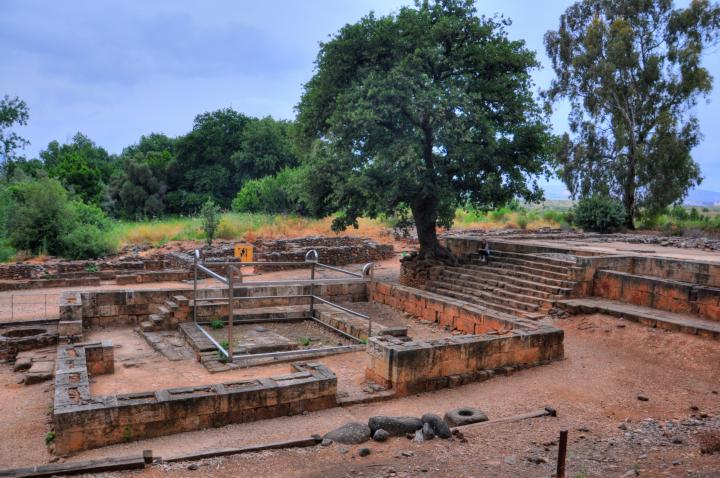
Tell Dan Stele
In 1993 archaeologists were excavating part of a wall, when they discovered a broken stone, approximately 32 cm high by 22 cm wide, with an Aramaic inscription on it. The next year, two more fragments of the stele were unearthed. It turned out to be a victory stele that the king of Aram had erected when he captured Dan sometime in the 9th century BC. When the Israelites regained control of Dan, they tore down the monument and broke it up, using the pieces in the construction of a new city gate.
The stele records the victory of a King of Aram – most likely Hazael, although he is not named – over the King of Israel, and his ally, the king of the “House of David.”9 It was the phrase, “House of David” that set the archaeological world afire. Given the stele’s date (ca. 841 B.C. – about 200 years after David’s rule) and its historical context (that the kings of Israel and Judah were allies at this time, on guard against Hazael the king of Aram – 2 Kings 9:14-16), the majority of scholars and archaeologists have concluded that the Tell Dan Inscription does indeed reference King David. Archaeologist, Yosef Garfinkel explains the importance of the “House of David” inscription: “‘House of David’ means ‘dynasty of David’. So now we know that there was a guy called David and he had a dynasty…[it] is absolutely clear that David is not a mythological figure. So the mythological paradigm collapsed in one moment.”10
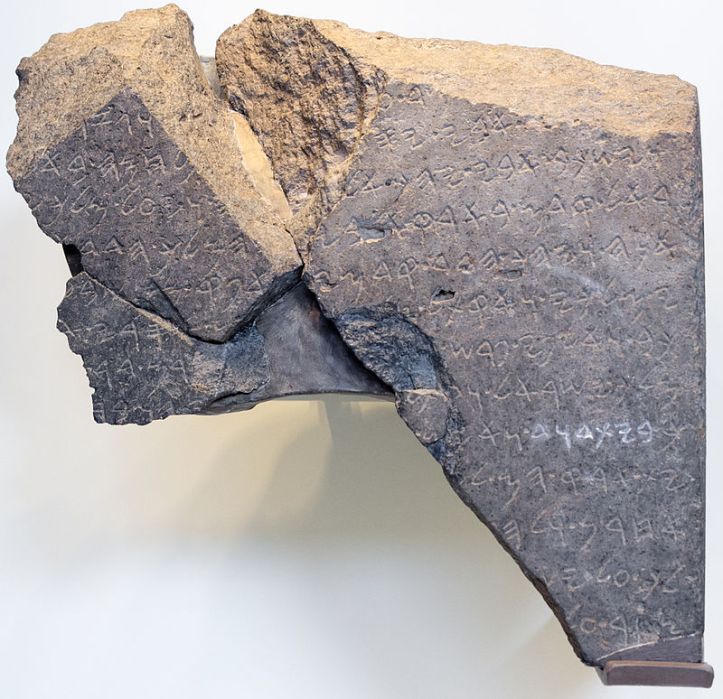
Summary
Important archaeological discoveries at Tell Den shed light on the Israelite Kingdom, especially during the 10th and 9th centuries BC. They attest to the fact that the ancient city of Dan was an important center in Israel’s history and affirm biblical details from the site.
Title Photo: Mboesch / Wikimedia Commons / CC BY-SA 4.0
Endnotes:
1 “Archaeological Sites in Israel-Dan- The Biblical City” Israel Ministry of Foreign Affairs. July 29, 1998. https://mfa.gov.il/mfa/israelexperience/history/pages/archaeological%20sites%20in%20israel%20-%20dan-%20the%20biblical.aspx (Accessed May 29, 2019).
2 Andrew E. Steinmann, From Abraham To Paul: A Biblical Chronology. (St. Louis: Concordia Publishing House, 2011), 72.
3 “Mudbrick Gate,” Tel Dan Excavations. https://teldan.wordpress.com/mudbrick-gate/ (Accessed May 29, 2019).
4 Bryant G. Wood, “Ahab the Israelite.” Associates for Biblical Research. Jan. 2, 2006. https://biblearchaeology.org/research/divided-kingdom/3584-ahab-the-israelite?highlight=WyJhaGFiIiwiYWhhYidzIiwiJ2FoYWIiLCJ0aGUiLCIndGhlIiwidGhlJ3lhaHdlaCIsInRoZSdzY2hvbGFycyciLCJ0aGUnZmllcnkiLCJ0aGUna2luZyIsInRoZScwJyIsInRoZSd3YXRlcnMiLCJpc3JhZWxpdGUiLCJpc3JhZWxpdGUncyIsIidpc3JhZWxpdGUnIiwiYWhhYiB0aGUiLCJhaGFiIHRoZSBpc3JhZWxpdGUiLCJ0aGUgaXNyYWVsaXRlIl0= (Accessed May 29, 2019).
5 “Discoveries,” Tel Dan Excavations. https://teldan.wordpress.com/discoveries/ (Accessed May 29, 2019).
6 Todd Bolen, “Dan.” Bible Places. https://www.bibleplaces.com/dan/ (Accessed May 29, 2019).
7 “Tell Dan,” Bible Walks. Oct. 1, 2010. https://biblewalks.com/sites/TellDan.html (Accessed May 30, 2019).
8 Todd Bolen, “Dan.” Bible Places. https://www.bibleplaces.com/dan/ (Accessed May 30, 2019).
9 Biblical Archaeology Society Staff, “The Tel Dan Inscription: The First Historical Evidence of King David from the Bible,” Biblical Archaeology Society. May 2, 2019. https://www.biblicalarchaeology.org/daily/biblical-artifacts/the-tel-dan-inscription-the-first-historical-evidence-of-the-king-david-bible-story/ (Accessed May 30, 2019).
10 “King David & Archaeology, Part 1: The Valley of Elah” CBN Documentaries. https://www.youtube.com/watch?v=vqptqx-JAAA (Accessed May 29, 2019).

I loved reading about this. Thank you for posting. I visited these sites years ago and still marvel at their existence. One comment: I would recommend editing the word “Alter” to “Altar”. The word is used three times and misspelled each time.
Peace be with you.
Thanks Joseph! I appreciate your kind words and have changed alter to altar. Good catch.